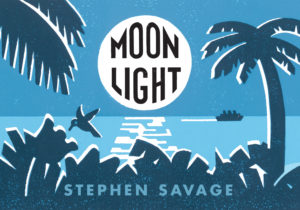“Bring the Text to Life: Baking the Cake”
In 2004, when I began my career in children’s books with a book called Polar Bear Night (published by Scholastic, written by Lauren Thompson), I thought I had it all figured out. I was of the mind that picture books were mainly about the visuals (why else would they call them “picture books”). And as crazy as what I am about to say sounds, I didn’t really understand how the text functioned. I knew it filled blank spaces in the illustrations, but that’s about it. It seemed like “the icing on the cake”. Little did I know.
Then in 2010, I decided I wanted to bake a cake and ice it, too. My daughter had just been born, and I felt inspired to write a story about her. One morning, as I stumbled across the Gowanus canal on my way to my studio in Brooklyn (I hadn’t gotten enough sleep the night before), I spotted a tug boat. “That’s my story”, I thought. I could see the visuals perfectly.
But what about those blank spaces in the images? They’d need words! By this time, I had illustrated three books, visited a few classrooms, gotten to know the reading habits of kids, and was starting to figure things out a bit. I was learning that picture books were read-alouds, and that the words were very important (duh!).
I was on to the fact that words could be fun to say. Words could engage. More importantly, words could create a beginning, middle, and end in a book. I had so much to learn. I spent months writing my ideas down on index cards, until the cards fell together to form Little Tug (Roaring Brook Press/Macmillan).
This summer, my seventh book as both author and illustrator comes out. It’s called Moonlight. And I’m sure if I showed the book to my 2004 self, he’d scoff at the text. At only 85 words, he’d regard it as a very thin layer of icing on top of an already yummy cake.
But here’s what I’d say to my old, uniformed self: effective picture book text may seem effortless, but that’s not the case. I’d point out all the craft that went into the writing, a discussion of which, could be used to stimulate discussion in the classroom.
I’d point out FOUR examples of writing tools I used to bring the text to life:
- PERSONIFICATION: The book opens with the line “Something is on the move”. Personifying the moonlight, turning it into the protagonist in the story, was one way I put a new spin on the traditional lullaby/nighttime theme.
- VIVID VERBS: Words like “slithering”, “drifting” and “tumbling” give the reader a sense of action and adventure. They create excitement and drama.
- ALLITERATION: “Sliding down silvery tracks” may just be my favorite line in the book. Why? It’s fun to say. And I have my editor, Neal Porter, to thank for that alliterative line. He replaced my original word, “Icy” with “silvery”. PS: I think it’s nice for young readers to hear how professional artists get help from their teachers (er, I mean editors 😉
- SENSORY LANGUAGE makes a story relatable. I used the line “Then it rests for a while, next to you” for a rush of emotion at the critical moment in the story when the moonlight journeys into the child’s bedroom. Certainly, the image of the cat snuggled up against the child reinforces this ‘touch’.
So now that I’m thinking about it, this “icing on the cake” analogy doesn’t really apply anymore. In picture books, images always work together with text to tell the story. I had to work hard to figure this out, and luckily my editors and mentors have been generous with their advice and suggestions. Like most things in life, writing is about practice and good guidance. And a little piece of cake and a glass of milk while you’re working never hurts!
NOTE: Special thanks goes to teacher/reading specialist Renee Davis of Glastonbury, Connecticut (my sister-in-law) for acting as a consultant on this post.
Published August 23rd, 2022 by Neal Porter Books
About the Book: A lyrical bedtime read about the captivating effects of moonlight and its nightly journey.
“Something is on the move.”
When moonlight shines, it’s not like most light. In the quietest hours of the night, it swings through trees and slithers down rivers. It drifts in the wake of steamships and catches on the propeller of a passing plane. It blankets neighborhoods before coming to rest by your side.
In this bedtime picture book, Stephen Savage, author and illustrator of And Then Came Hope, Babysitter from Another Planet, and the Geisel Honor book Supertruck, presents a lyrical text and illustration full of dramatic light and shadow to pay homage to the mysterious moon and the unique ways it reveals itself each night.
About the Author: STEPHEN SAVAGE is an award-winning children’s book author and illustrator whose accolades include a New York Times Best Illustrated Book (Polar Bear Night) and a Geisel Honor (Supertruck). Polar Bear Night was a New York Times bestseller. He also wrote and illustrated And Then Came Hope and Babysitter from Another Planet. He teaches at the School of Visual Arts and lives in Brooklyn with his wife, daughter and two dogs.
https://www.savageillustrator.com/
@savageillustrator on Instagram
@savageartist on Twitter
https://holidayhouse.com/book/moonlight/
@holidayhousebks on all platforms
Thank you, Stephen, for sharing sharing your analogy that can move writing to the next level!



1 thought on “Author Guest Post: “Bring the Text to Life: Baking the Cake” by Stephen Savage, Author of Moonlight”